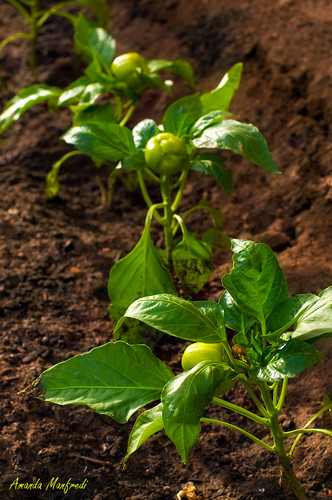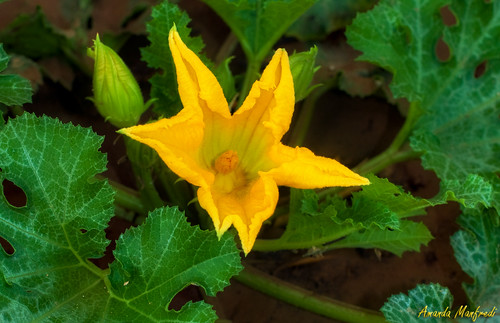

Composting is an easy and important step toward living a sustainable lifestyle and growing a productive garden in the desert. It benefits the planet by reducing the volume of landfills. It benefits your garden by providing your soil with a long-term, consistent source of nutrients. It also facilitates improvement of the structure of our Arizona soil by increasing the drainage of our native clay.
Once you decide to compost, your first step should be to obtain a bin (or start a pile on the ground). You can buy elaborate tumblers and bins from many online sources, or follow the growing DIY trend and make your own. I decided to save a ton of money by making my own. I had never really constructed anything, so this was a bit of an adventure for me.
I started with an 18 gallon Rubbermaid storage container I picked up at WalMart for$4.00. I drilled holes along the sides in the top few inches for ventilation. I also drilled 5 holes in the middle of the bottom of the bin for drainage. Surprisingly, I didn’t lose any fingers, so if I can do it, I’ll bet you can too.
I placed the finished bin on top of two old cinderblocks, taking care not to block the drainage holes. Then I placed a Tupperware container underneath the drainage holes the catch the valuable liquid that is produced as your compost breaks down, called compost tea. The whole project took less than an hour and works beautifully. I have fresh compost tea for my garden every morning.
Making a compost bin is only half of the process. Once you have the bin, you’ve got to fill it up with the right combination of materials. Don’t worry. It’s really easy to do! There are a two important points to remember.
1. Mix equal parts “brown” and “green” materials.
2. Provide adequate ventilation and moisture.
Green materials include fruits and vegetables and peels, kitchen scraps such as egg shells, coffee grounds, tea leaves, hair, manure, fresh grass clippings, and other items which are high in nitrogen. Brown materials are “woody” and high in carbon. Some examples are; coffee filters, tea bags, paper, newspaper, paper bags, cardboard, dry brown grass clippings and leaves, hay, pine needles, sawdust, and straw. When selecting your materials, avoid toxic elements like dog or cat feces, paper that is heavily inked, dairy, and meat (technically not toxic, but really stinky and not beneficial to plants).
Cereal boxes and cardboard boxes can be soaked overnight, which makes the inked paper peel off easily and as a bonus, adds moisture to your bin. Also, feel free to throw in a handful of dirt. It contains microorganisms that contribute to the health of the soil.
Be a good host. Your bin will be home to tiny microbes that will help speed up the composting process. They need oxygen and water to survive. Most of the moisture in your pile will come from your green materials, but if your compost is crispy some wet newspaper or cardboard will help balance your bin. The ventilation holes in your bin bring in enough oxygen to aid the microorganisms in the top of the compost pile, but those at the bottom may need some assistance. Turning your compost distributes oxygen and will speed up the process.
As your composting materials break down they release their moisture. This is where your drainage holes come in handy. Too much moisture can kill your microbes and cause foul odors. Collect the fluid that drains from your bin for a convenient and effective garden fertilizer!
You will get out of your compost what you put in. You can literally throw all of your materials on a pile on the ground and you will eventually have compost. Alternatively, you can actively turn your pile, compost organic materials only, and even add worms to the mix. Your compost is ready to be harvested when it looks, feels, and smells like soil.
Happy composting and here are some resources for further info:
Vermicomposting (composting with worms)Feed the Soil, Not the Plants Soil Builders Group (Phoenix Permaculture Guild)













